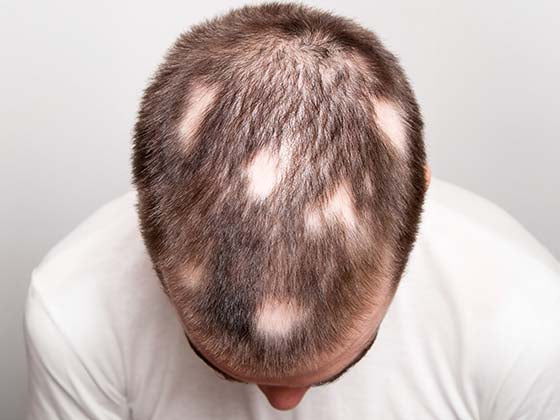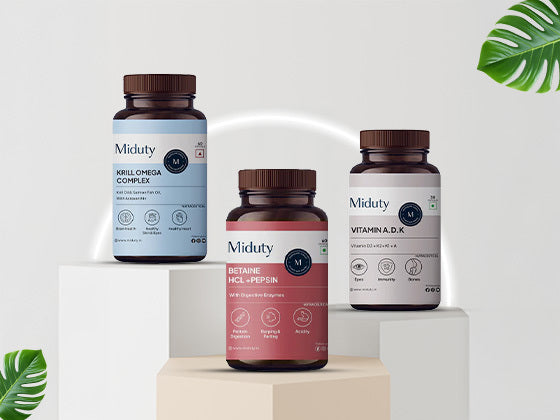Niacinamide, commonly known as vitamin B3 or nicotinamide, has grown in popularity in the cosmetics industry due to its multiple skin advantages. It is a water-soluble vitamin found in a variety of foods, and when applied topically, it provides a variety of benefits for various skin types and issues. When first introducing niacinamide into your skincare routine, it is recommended that you do a patch test to check for any adverse effects. Niacinamide can be found in a variety of skincare products, such as serums, moisturizers, and toners. If you have specific skin concerns or conditions, it's always a good idea to seek personalized guidance from a dermatologist or skincare professional.
Understanding Niacinamide: A Game-Changing Skincare Ingredient

Niacinamide, commonly known as vitamin B3 or nicotinamide, is an industry-changing skincare ingredient that has received considerable notice and appreciation. Because of its distinct qualities, it is a versatile and beneficial supplement to a variety of skincare programs. Niacinamide has deservedly earned its reputation as a game-changer in the field of skincare, from increasing skin barrier function to addressing several skin issues such as hyperpigmentation, acne, and wrinkles. Consider incorporating niacinamide into your daily skincare routine if you want to improve it and get a healthier, more vibrant complexion.
What Is Niacinamide and How Does It Work?
Niacinamide, also known as vitamin B3 or nicotinamide, is a water-soluble vitamin that belongs to the vitamin B family. It plays a crucial role in various biological processes in the body, including energy metabolism and DNA repair. When it comes to skincare, niacinamide has gained significant popularity due to its numerous benefits for the skin.
-
Skincare Benefits of Niacinamide: Niacinamide offers a wide range of benefits for the skin, making it a versatile and effective skincare ingredient. Some of its key benefits include enhanced skin barrier function, hydration and moisture retention, oil control, pore minimization, brightening and even-toned skin, anti-inflammatory properties, antioxidant protection, and collagen production support.
-
How Niacinamide Works: Niacinamide exerts its beneficial effects on the skin through various mechanisms, including barrier function, sebum regulation, melanin inhibition, anti-inflammatory, antioxidant, and collagen stimulation.
The Science Behind Niacinamide's Skin Benefits
The skin benefits of niacinamide are supported by scientific research and studies into its various modes of action. Niacinamide, also known as vitamin B3, interacts with the skin at the cellular level, producing a number of beneficial effects. Skin barrier enhancement, sebum regulation, and pore minimization, anti-inflammatory properties, antioxidant protection, melanin inhibition and hyperpigmentation reduction, collagen stimulation, anti-aging effects, and trans-epidermal water loss reduction are some of the science behind niacinamide's skin benefits. The multifaceted actions of niacinamide, which include barrier enhancement, sebum regulation, anti-inflammatory effects, antioxidant protection, melanin inhibition, collagen stimulation, and TEWL reduction, make it a powerful and versatile skincare ingredient that can address a wide range of skin concerns while also promoting overall skin health.
Why Niacinamide Is Beloved by Skincare Enthusiasts
Niacinamide is popular among skincare enthusiasts for a variety of reasons, including versatility, multi-faceted benefits, tolerance and safety, suitability for all ages, compatibility with other ingredients, scientifically proven results, non-greasy and lightweight formulations, affordability, non-photosensitizing, visible, and gradual results. Niacinamide is a beloved and trusted ingredient in the world of skincare due to its ability to address a wide range of skin issues and produces slow but visible results.
Addressing Hyperpigmentation with Niacinamide

Niacinamide is a valuable ingredient for addressing hyperpigmentation and uneven skin tone. It works by addressing multiple factors that contribute to melanin overproduction, the pigment responsible for dark spots, and hyperpigmentation. Here's how niacinamide can help with hyperpigmentation:
-
Melanin Inhibition: Niacinamide has been shown to inhibit the transfer of melanin from melanocytes (melanin-producing cells) to keratinocytes (skin cells). By inhibiting this process, niacinamide helps reduce the amount of melanin deposited in the skin, resulting in less hyperpigmentation and dark spots.
-
Brightening Action: Niacinamide's melanin-inhibiting action can help even out skin tone and brighten the complexion. It can help you look more radiant and luminous with regular use.
-
Anti-Inflammatory Properties: Niacinamide has anti-inflammatory properties that can help reduce the redness and irritation associated with hyperpigmentation and post-inflammatory hyperpigmentation (PIH). This makes it a good ingredient for people who have sensitive or inflamed skin.
-
Antioxidant Protection: Niacinamide, as an antioxidant, protects the skin from oxidative stress caused by free radicals. Free radicals can aggravate hyperpigmentation and accelerate skin aging. Niacinamide helps prevent additional damage and supports general skin health by neutralizing free radicals.
-
Collagen Stimulation: Niacinamide stimulates collagen production, which can improve skin texture and promote skin tone uniformity. Collagen promotes skin plumpness and reduces the appearance of fine lines and wrinkles.
-
Compatibility with Other Ingredients: Niacinamide is compatible with a wide range of other skincare ingredients commonly used to treat hyperpigmentation, including vitamin C, alpha hydroxy acids (AHAs), and retinoids. Combining niacinamide with other actives can boost its efficacy and provide all-around benefits for hyperpigmentation treatment.
-
Safe for Long-Term Use: Niacinamide is considered safe for long-term use and can be incorporated into daily skincare routines to achieve continuous benefits.
-
Well-Tolerated and Non-Sensitizing: Niacinamide is generally well-tolerated by skin types and is unlikely to irritate or trigger sensitization. This qualifies it for use on people with sensitive skin and those who might not be able to tolerate more aggressive treatments.
-
Suitable for Various Types of Hyperpigmentation: Niacinamide can address various forms of hyperpigmentation, including sunspots, age spots, and post-inflammatory hyperpigmentation resulting from acne or other skin traumas.
-
Preventive Effect: By inhibiting melanin production and protecting the skin from environmental damage, niacinamide can also have a preventive effect, reducing the likelihood of new hyperpigmentation forming.
How Niacinamide Fades Dark Spots and Uneven Skin Tone
Niacinamide reduces the appearance of dark patches and uneven skin tone by targeting many elements involved in the development of hyperpigmentation. Niacinamide contributes to this process by inhibiting melanin transfer, reducing melanosome transfer, regulating tyrosinase activity, acting as an anti-inflammatory agent, providing antioxidant protection, stimulating collagen, improving overall skin health, and being compatible with other substances. It is important to remember that getting rid of dark spots and achieving an even skin tone takes time. The consistent and continuous use of niacinamide-containing products is critical to seeing visible results over time. Additionally, it is critical to apply sunscreen on a daily basis, as sun exposure can cause and worsen hyperpigmentation. With time and a thorough skincare regimen, niacinamide can be a valuable ally in achieving a brighter and more even complexion.
Real-Life Examples: Niacinamide Before and After Hyperpigmentation
We can describe the typical side effects that some people may experience when using niacinamide to treat hyperpigmentation.
-
Example 1 - Sunspots: Before: A person has several sunspots (dark spots) on their face and hands as a result of prolonged sun exposure. After: The sunspots become noticeably lighter and the skin tone appears more even after using niacinamide-containing skincare products on a regular basis for a few months.
-
Example 2: Post-Inflammatory Hyperpigmentation (PIH): Before: A person's skin is prone to acne, and acne breakouts frequently result in post-inflammatory hyperpigmentation. Their cheeks and jawline develop dark stains and spots as a result. After: The PIH marks gradually fade with regular use of niacinamide-based skincare products, and the skin looks clearer and more even-toned.
-
Example 3: Uneven Skin Tone: Before: A person has uneven skin tone and hyperpigmented spots on their chin, cheeks, and forehead, which are most likely caused by a combination of hormonal factors and sun exposure. After: The individual's skin tone improves and becomes more even after incorporating niacinamide into their skincare regimen, and hyperpigmented spots appear to be less noticeable.
Incorporating Niacinamide Products into Your Hyperpigmentation Routine
Including niacinamide products in your hyperpigmentation skincare routine can help you address dark patches and uneven skin tone. To get the most out of niacinamide's effects, follow these steps: Wash, tone, exfoliation (optional), niacinamide serum, spot treatment (optional), other actives, moisturize, sunscreen, night care, and consistency are crucial. Remember that everyone's skin is unique, so personalize your routine to your specific needs and issues. If you're unclear about which products to use or have specific skin concerns, it's a good idea to seek personalized guidance and suggestions from a dermatologist or skincare professional.
Niacinamide's Impact on Acne-Prone Skin

Niacinamide can improve acne-prone skin by addressing the elements that cause acne to occur. Some of the ways niacinamide can help acne-prone skin include regulating sebum production, having anti-inflammatory properties, pore minimization, pore-clogging prevention, antibacterial effects, post-inflammatory hyperpigmentation (PIH) management, enhancing the skin barrier, complementing other acne treatments, being non-drying and tolerable, and being non-photosensitizing.
Niacinamide's Anti-Acne Properties and Mechanisms
Niacinamide contains numerous anti-acne effects and processes, making it a beneficial component in acne-prone skin management. Here are some of the ways niacinamide can help with acne: Regulation of sebum production, anti-inflammatory effects, antimicrobial action, pore minimization, management of post-inflammatory hyperpigmentation (PIH), skin barrier strengthening, complementing other acne treatments, non-drying and well-tolerated, and non-photosensitizing. Individual reactions to niacinamide may vary, despite its numerous benefits for acne-prone skin. As with any skincare product, it's critical to gradually incorporate niacinamide into your routine and conduct a patch test to rule out any negative responses. If you have severe or persistent acne, you should see a dermatologist develop a customized treatment plan that addresses your unique skin needs. Niacinamide can be an effective addition to an acne skin care regimen, helping to achieve clearer, calmer, and more balanced skin over time.
Visual Evidence: Before and After Niacinamide for Acne
Search online for before-and-after photographs of people who have used niacinamide for acne on skincare forums, social media platforms, and credible skincare websites. Many people share their skincare adventures and experiences, including progress images, to demonstrate the impact of various products, including niacinamide-containing ones. Keep in mind that the effects of niacinamide on acne can differ from person to person. Some people will notice major improvements in their acne, while others will notice very minor alterations. It's important to note that skincare is extremely individualized, and factors including skin type, acne severity, the formulation of the niacinamide product used, and the overall skincare routine can all have an impact on the results. Before experimenting with any new skincare product or ingredient, including niacinamide, consult with a dermatologist or skincare professional. They can give you personalized advice based on your skin's specific needs and concerns, and they can show you how to effectively incorporate niacinamide into your acne skincare routine.
Best Practices for Using Niacinamide in Your Acne-Fighting Regimen
In order to ensure optimum effectiveness and the least chance of discomfort, incorporate niacinamide into your acne-fighting regimen. Some tips to follow while using niacinamide for acne are to patch test, start cautiously, choose the proper products, complement with other acne-fighting components, layer in order, use sunscreen, be patient, check your skin, be consistent, and consult a dermatologist's advice. Keep in mind that everyone's skin is unique, and what works for one person might not work for another. Finding the proper balance of skincare chemicals and products is frequently a trial and error-process. Patience, effort, and personalized care are all necessary for cleaner and healthier skin.
Targeting Common Skin Concerns with Niacinamide

Niacinamide is a versatile skincare ingredient that can be used to target and treat a wide range of skin issues. Here's how niacinamide can help with various skin problems:
-
Hyperpigmentation and Dark Spots: Niacinamide reduces the appearance of dark spots and hyperpigmentation by inhibiting melanin transfer. Regular application can result in a more even skin tone and a brighter complexion.
-
Acne and Breakouts: Niacinamide regulates sebum production, reduces inflammation, and has mild antimicrobial properties, making it useful in acne-prone skin management. It aids in the control of excess oil, the reduction of inflammation, and the reduction of breakouts.
-
Enlarged Pores: Niacinamide can help reduce the appearance of enlarged pores by regulating sebum production and supporting skin barrier function. Smaller pores result in a more even complexion.
-
Uneven Skin Texture: Niacinamide promotes collagen synthesis, which can improve skin texture and firmness. Regular application can result in a smoother and more refined skin surface.
-
Redness and Irritation: Niacinamide has anti-inflammatory properties that can help soothe redness and reduce skin irritation, making it suitable for people with sensitive or rosacea-prone skin.
-
Dryness and Dehydration: Niacinamide helps retain moisture and prevent water loss by strengthening the skin's barrier, resulting in better hydration and relief from dryness.
-
Aging and Fine Lines: The collagen-boosting properties of niacinamide can help improve skin elasticity, reducing the appearance of fine lines and wrinkles and contributing to a more youthful complexion.
-
Dull and Lacklustre Skin: Niacinamide brightens skin by inhibiting melanin production and promoting overall skin health, resulting in a more radiant and glowing complexion.
-
Environmental Damage: Niacinamide, as an antioxidant, protects the skin from environmental stressors such as pollution and UV damage, reducing the impact of external factors on the skin.
-
Skin Barrier Strengthening: Niacinamide improves skin barrier function by increasing ceramide production, which results in better protection against external irritants and pollutants.
Most skin types accept niacinamide well, making it useful for a variety of issues and compatible with other skincare products. It can be used as part of a daily skincare routine or as a focused therapy for certain skin concerns. Consistency, as with any skincare item, is essential for noticing substantial changes over time. However, if you have specific skin concerns or conditions, it's always preferable to seek personalized advice and treatment recommendations from a dermatologist or skincare professional.
Niacinamide for Minimizing Pore Size and Refining Skin Texture
Niacinamide can help reduce the appearance of pore size and refine skin texture. Here's how it works and how to use it in your skincare routine, including sebum management, pore constriction, collagen stimulation, exfoliation, anti-inflammatory qualities, and improved skin barrier.
How to Include Niacinamide in Your Skincare Routine:
-
Cleanser: Begin by cleansing the skin gently to remove impurities and excess oil.
-
Niacinamide Serum: Apply a 5% to 10% niacinamide serum to the skin. Serums are light and allow niacinamide to effectively penetrate the skin.
-
Exfoliation (Optional): Depending on your skin type and tolerance, you can use an exfoliating product that contains AHAs or BHAs to refine skin texture and unclog pores. To reduce the risk of irritation, avoid using exfoliants and niacinamide in the same routine.
-
Moisturizer: Apply a moisturizer after cleansing to lock in hydration and support the skin barrier.
-
Sunscreen: Applying sunscreen on a daily basis is essential because exfoliating agents and niacinamide may increase sun sensitivity. Choose a broad-spectrum sunscreen with an SPF of at least 30.
-
Night Care: Consider using products that promote skin repair and rejuvenation in your evening routine, such as a niacinamide-containing night cream or oil.
-
Consistency is Key: Use niacinamide products consistently and be patient. It may take several weeks or even months before changes in pore size and skin texture become apparent.
Before and After: Niacinamide's Effects on Fine Lines and Wrinkles
Based on its properties and scientific research, we can describe niacinamide's typical effects on fine lines and wrinkles as improved skin elasticity, reducing trans-epidermal water loss, moisturization and hydration, antioxidant protection, anti-inflammatory effects, photo-protection, and complementing other anti-aging ingredients. It is important to remember that the effects of niacinamide on fine lines and wrinkles can vary depending on age, skin type, and the severity of the aging signs. Individual results may take time to manifest, and consistent use of niacinamide-containing products is required to achieve the desired results. Consider incorporating niacinamide into your daily skincare routine if you want to target fine lines and wrinkles. Look for niacinamide-containing serums or creams and use them as directed. As with any new skincare product, perform a patch test before applying it to your entire face, and if you have specific concerns or conditions, consult a dermatologist for personalized advice and recommendations.
Boosting Radiance: Niacinamide's Impact on Dull, Lackluster Skin
Niacinamide can have a significant impact on dull, lacklustre skin, assisting in the enhancement of radiance and the attainment of a more vibrant complexion. The following is how niacinamide improves skin radiance:
-
Inhibition of Melanin Production: Niacinamide prevents melanin (the pigment responsible for skin color) from being transferred from melanocytes to keratinocytes. By reducing melanin production, niacinamide can help even out skin tone and reduce the appearance of dark spots, giving the skin a brighter and more radiant look.
-
Improved Skin Barrier Function: Niacinamide strengthens the skin's barrier, which is essential for keeping the skin hydrated and protecting it from environmental stressors. A healthy skin barrier results in a smoother, more luminous complexion.
-
Improved Moisture Retention: Niacinamide aids in the retention of moisture in the skin, preventing it from becoming dry and lacklustre. Skin that is well-hydrated reflects light more effectively, contributing to a more radiant appearance.
-
Inflammation Reduction: The anti-inflammatory properties of niacinamide help to soothe and calm the skin, reducing redness and irritation that can contribute to a dull complexion.
-
Antioxidant Protection: Niacinamide, as an antioxidant, protects the skin from oxidative stress caused by free radicals. By neutralizing free radicals, niacinamide promotes overall skin health and prevents premature aging, resulting in a radiant complexion.
-
Collagen Stimulation: Niacinamide stimulates collagen production, which improves skin elasticity and texture. This can result in a smoother and plumper appearance, enhancing the skin's radiance even more.
-
Complementing Other Radiance-Boosting Ingredients: Niacinamide can be used alongside other radiance-boosting ingredients, such as vitamin C and alpha hydroxy acids (AHAs). These ingredients work together to improve the skin's brightness and overall glow.
-
Non-Irritating and Tolerable: Most skin types, including sensitive skin, tolerate niacinamide well. It is unlikely to cause skin irritation, making it a safe and gentle option for improving skin radiance.
Maximizing Niacinamide's Benefits in Your Skincare Routine

Follow these guidelines to get the most out of niacinamide in your skincare routine:
-
Select Quality Products: Look for reputable skincare products that contain a sufficient amount of niacinamide (usually between 2% and 10%) and are free of unnecessary fillers or irritants. Check the ingredient list to see if niacinamide is near the top, indicating a higher concentration.
-
Patch Test: Perform a patch test on a small area of your skin before applying niacinamide to your entire face to check for any allergic reactions or irritations.
-
Consistent Use: The benefits of niacinamide build up over time. Use it as part of your daily skincare routine to see significant results.
-
Layering Order: Apply niacinamide products after cleansing and toning, but before heavier creams or oils. This improves niacinamide absorption through the skin.
-
Combine with Other Ingredients: Niacinamide complements other skincare ingredients like vitamin C, hyaluronic acid, and peptides. Consider using products that combine niacinamide with other beneficial actives to boost its effects.
-
Separate from Acids: Avoid using niacinamide in the same skincare routine as highly acidic products such as AHAs, BHAs, or vitamin C. Niacinamide can form complexes with acids, reducing its effectiveness. Instead, use niacinamide in a different routine or at a different time of day.
-
Morning and Evening Use: Niacinamide can be used in both the morning and evening routines, depending on your preferences and the other active ingredients in your regimen.
-
Sunscreen: Because niacinamide does not make the skin more sensitive to sunlight, it can be used in the morning routine. However, always follow up with sunscreen during the day to protect your skin from UV damage.
-
Target-Specific Concerns: Niacinamide can address various skin concerns. Choose products formulated to target specific issues, such as hyperpigmentation, acne, or dullness.
-
Adjust Concentration Based on Sensitivity: If you experience any sensitivity or irritation with a higher concentration of niacinamide, consider switching to a lower concentration or reducing the frequency of use.
-
Stay Patient: Like any skincare ingredient, it may take several weeks or even months to see noticeable results. Be patient and consistent in your skincare routine.
Remember that everyone's skin is unique, so individual results may vary. If you have specific skin concerns or conditions, seek personalized advice and recommendations from a dermatologist or skincare professional on how to maximize niacinamide's benefits in your skincare routine.
Choosing Niacinamide Products: Creams, Serums, and More
There are several formulations of niacinamide products available, including creams, serums, and other options. Each formulation has advantages, and the one you choose should be based on your skin type, concerns, and personal preferences. Here's a breakdown of the various niacinamide product categories:
-
Niacinamide Serums: Serums are lighter, faster-absorbing liquids with a higher concentration of active ingredients. Niacinamide serums are popular because they provide a concentrated dose of niacinamide to the skin. They are appropriate for all skin types, particularly those who prefer a lightweight texture under their moisturizer or makeup.
-
Niacinamide Creams and Lotions: Niacinamide creams and lotions have a richer and more emollient texture than serums. They provide additional hydration and are appropriate for dry or normal skin. Niacinamide creams are typically used as the final step in a skincare routine to lock in moisture.
-
Niacinamide Moisturisers: Niacinamide is one of the active ingredients in some moisturizers. These moisturizers provide hydration as well as niacinamide benefits in a single product. They are useful for those who prefer a more straightforward skincare routine.
-
Niacinamide Masks and Sheet Masks: Niacinamide sheet masks and face masks can provide targeted and intensive treatment for specific concerns. These masks contain niacinamide and other beneficial ingredients that provide hydration and radiance to the skin.
-
Niacinamide Toner or Essence: Niacinamide is found in some toners and essences to provide additional skin benefits after cleansing. These items can aid in the preparation of the skin for subsequent treatments and serums.
-
Niacinamide Spot Treatments: Niacinamide spot treatments are intended to target specific areas of concern, such as dark spots, hyperpigmentation, or acne spots. They deliver a concentrated dose of niacinamide to target specific issues.
-
Niacinamide Sunscreens: Niacinamide is found in some sunscreens and provides both sun protection and additional skin benefits. These sunscreens can help those who want to seamlessly incorporate niacinamide into their daytime routine.
Remember that everyone's skin is different, and what works for one person may not work for another. Consider performing a patch test before applying a new niacinamide product to your entire face, especially if you have sensitive skin or allergies. If you have specific skin concerns or conditions, consult with a dermatologist or skincare professional to find the best niacinamide product for you.
Niacinamide Dosage and Application Guidelines
Niacinamide is generally well-tolerated and safe for most people when used as directed. The proper dosage and application guidelines will vary depending on the concentration of the product, your skin type, and the specific skin concern you are addressing. The following are some general niacinamide dosage and application guidelines:
-
Recommended Concentration: Niacinamide products typically contain concentrations ranging from 2% to 10%. A concentration of 5% is commonly used in many formulations and is generally effective for addressing various skin concerns.
-
Patch Test: Before using niacinamide on your entire face, perform a patch test. Apply a small amount of the product to a small area of your skin, such as the inner forearm or behind the ear. Monitor the area for 24 hours for any signs of irritation or allergic reactions. If no adverse reactions occur, you can proceed to use it on your face.
-
Frequency of Use: For most people, using niacinamide once or twice daily can be beneficial. However, if you are new to niacinamide or have sensitive skin, consider starting with once-daily use and gradually increasing the frequency as your skin builds tolerance.
-
Application Order: Apply niacinamide products after cleansing and toning, but before heavier creams or oils. This allows niacinamide to be better absorbed by the skin.
-
Amount to Use: The amount of niacinamide product to use depends on the formulation and your specific needs. For serums, a pea-sized amount is usually sufficient for the entire face. For creams or lotions, use the recommended amount indicated on the product label.
-
Avoid Mixing with Strong Acids: Avoid using niacinamide in the same skincare routine with highly acidic products like alpha hydroxy acids (AHAs), beta hydroxy acids (BHAs), or vitamin C. Niacinamide can form complexes with acids, which may reduce its effectiveness. If you want to use both niacinamide and acidic products, consider using them at different times of the day or on alternate days.
-
Sunscreen Use: While niacinamide is non-photosensitizing and does not make the skin more sensitive to the sun, it's still essential to use sunscreen daily. Niacinamide is often used in daytime skincare routines, and sun protection is crucial to prevent further skin damage and protect against UV-induced aging.
-
Be Patient and Consistent: Niacinamide's benefits are cumulative and may take several weeks or months to become noticeable. Be patient and consistent in your skincare routine to see significant improvements.
Combining Niacinamide with Other Skincare Ingredients for Enhanced Results
Combining niacinamide with other skincare ingredients can improve results because different actives can work together to address multiple skin concerns. However, to avoid irritation or decreased efficacy, it is critical to be aware of potential interactions and avoid using certain ingredients together. Here are some combinations that can enhance the benefits of niacinamide:
-
Niacinamide + Vitamin C: Niacinamide and vitamin C are both powerful antioxidants that can help brighten the skin and fade dark spots. They can boost each other's antioxidant properties and improve overall skin tone when used together. To avoid potential interactions, take them at different times of the day, such as vitamin C in the morning and niacinamide in the evening.
-
Niacinamide + Hyaluronic Acid: Niacinamide improves the skin's barrier function, while hyaluronic acid attracts and retains moisture. Combining the two can provide hydration and support the skin's moisture levels, resulting in plump and supple skin.
-
Niacinamide + Peptides: Peptides are amino acid chains that help collagen production and skin firmness. Niacinamide's collagen-stimulating properties can work in tandem with peptides to improve skin texture and elasticity.
-
Niacinamide + Retinoids: Niacinamide's anti-inflammatory properties can help reduce potential retinoid irritation, making it an appropriate combination for those who use retinoids for anti-aging purposes. Consider using niacinamide in the morning and retinoids in the evening to minimize the risk of irritation.
-
Niacinamide + Ceramides: Ceramides are lipid molecules that strengthen the skin barrier and prevent moisture loss. The combination of niacinamide and ceramides can improve the overall health of the skin barrier, resulting in improved hydration and protection.
-
Niacinamide + Alpha Hydroxy Acids (AHAs): Alpha Hydroxy Acids (AHAs), such as glycolic acid and lactic acid, are exfoliating agents that can improve skin texture and tone. When used in conjunction with exfoliation, niacinamide can help soothe and balance the skin.
Remember the following when combining skincare ingredients:

- Patch Test: Always perform a patch test before introducing new ingredients into your routine, especially if you have sensitive or reactive skin.
- Alternate or Separate Usage: To avoid potential conflicts, think about using different active ingredients on different days or at different times of your skincare routine if you are using more than one product.
- Start Slowly: If you have not used active ingredients in combination before, start out with lower concentrations to see how your skin reacts and can tolerate them.
- Sunscreen is Essential: When using active ingredients such as AHAs or retinoids, it is critical to use sunscreen on a daily basis to protect the skin from sun damage and potential irritation.
- Consult a Professional: If you are not sure how to combine specific ingredients, consult with a dermatologist or skincare professional for personalized advice and a customized skincare routine.
By thoughtfully combining niacinamide with other compatible skincare ingredients, you can create a well-rounded and effective skincare routine that addresses multiple skin concerns and promotes healthy, radiant skin.









































